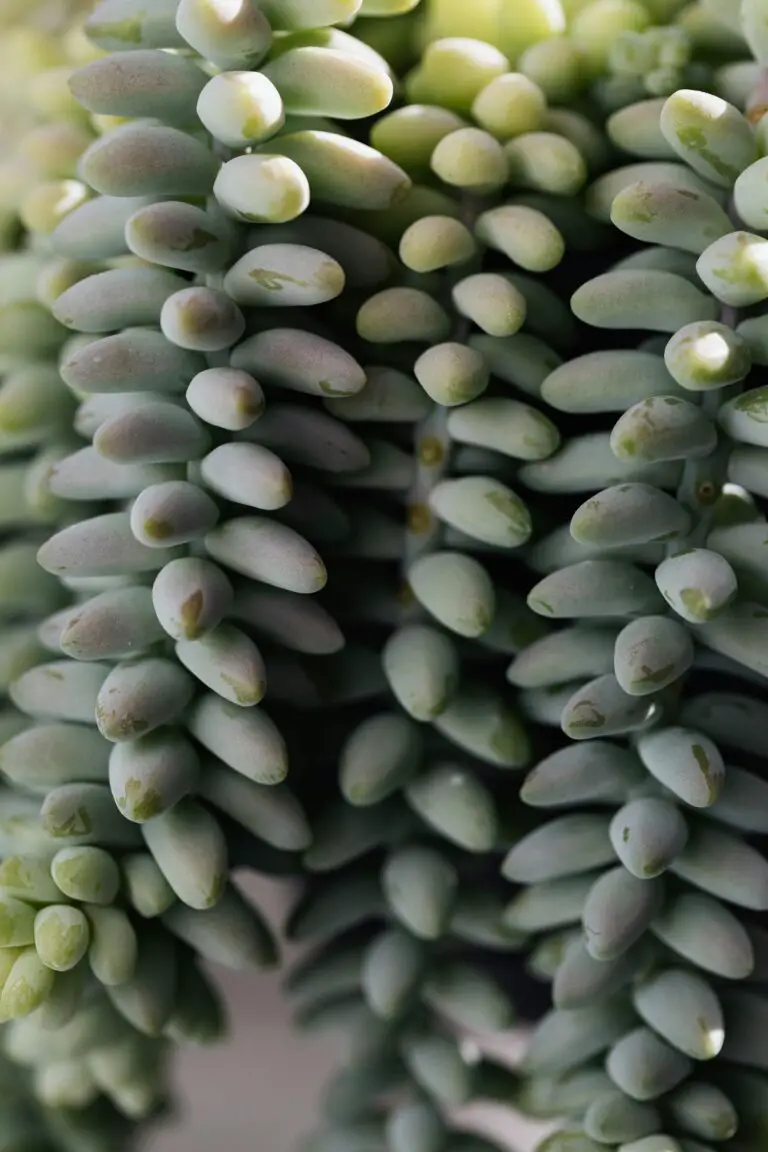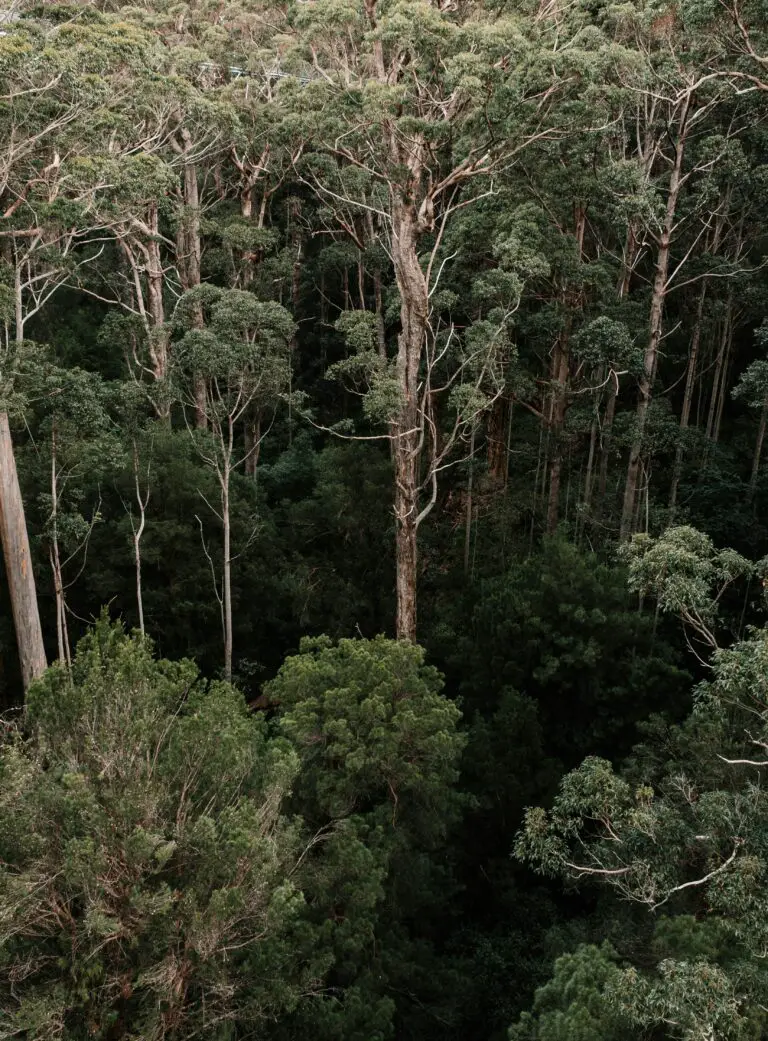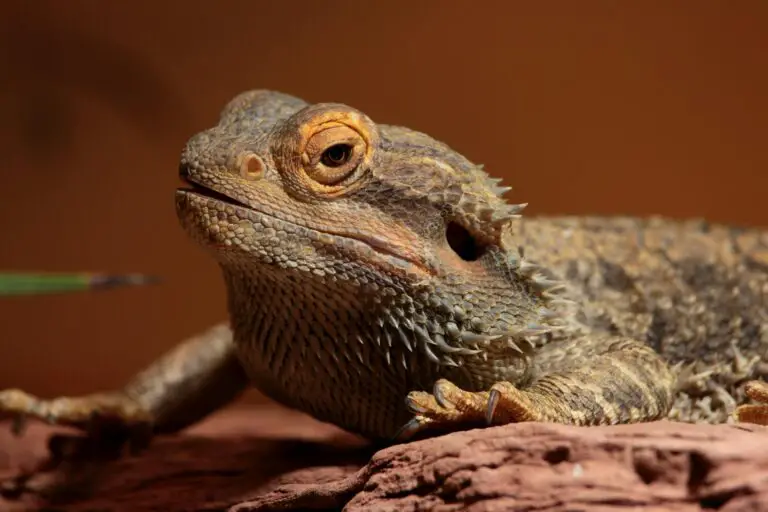Introduction to Sedum
Welcome to the inviting world of Sedum, commonly referred to as ‘Stonecrop’. This charming succulent has made its mark in the gardening and landscaping realms, captivating the hearts of plant enthusiasts worldwide. With a lineage of diverse species, Sedums are not just plants; they’re a fascination, evolving with each new cultivar. Let’s dial back and explore why these resilient succulents have garnered such admiration and how they seamlessly integrate into our green spaces.
Imagine a hardy plant thriving in rugged conditions, where most would falter. This is Sedum for you – the embodiment of strength and beauty, sprouting even in the shallow crevices of rocky ledges. Their reputation in gardening and landscaping circles stems from their unassuming nature and versatile utility; whether it’s draping over a sunny wall or brightening up a green roof, Sedums are the go-to plant for a low-maintenance yet visually stunning spectacle.
As gardeners yearn for drought-tolerant options that offer a tapestry of textures and colors, Sedums rise to the occasion. Picture the ‘Autumn Joy’ variety, its charismatic blooms lighting up the autumnal garden with deep, rosy hues. These plants aren’t just surviving; they’re thriving, bringing life to gardens even as the seasons turn colder.
For anyone new to the realm of succulents, expanding your green thumb skills with Sedum is an excellent choice. Their forgiving nature makes them a perfect start, allowing novices to witness the rewarding journey of plant care and nurturing. Discover the guide to cultivating these intriguing plants, where you’ll find everything you need to create your very own Sedum sanctuary.
Sedums are more than just an addition to our plant collections; they are storytellers, each species holding a tale of adaptation and survival. As we continue to explore ‘Where Sedum Thrives’, we unpeel the layers of their enduring spirits and inherent resilience that allows them to flourish from the jagged cliffs of their native habitats to the comforting confines of our homes and gardens.

Defining ‘Native’
Have you ever wondered what it really means when someone says a plant is ‘native’ to a particular area? Well, you’re in for some botanical enlightenment! Being ‘native’ goes beyond just being born in a place—it’s about a plant’s entire evolutionary journey, molded by the lay of the land, dancing with the local climate, and brushing shoulders with the neighborhood wildlife. Put simply, native plants are those that have thrived for centuries in their cozy corner of the world without human intervention.
Imagine a game of survival where the players (in this case, plants like Sedum) are continuously adapting their strategies to outdo the tricky levels (think: soil type, water availability, temperatures, and local critters). Each region, with its unique ecological and geographical playbook, sets up the stage. Over generations, our green friends evolve nifty survival skills—roots that can sip water from the depths or leaves that can brave scorching suns—all to claim the title of native species in their home turf.
Take, for example, the quirky stonecrop plants scattered across the rocky mountaintops. They’ve got their survival strategy down pat, storing water in their chubby leaves to outlast dry spells—a prime example of local flora acing the adaptation game in their native domain. And it’s not just about playing solo; native plants are team players, underpinning the whole ecosystem with a web of interdependencies. They’re like that popular kid in school, pivotal in the social network, whom everyone wants to befriend—from pollinators buzzing for a nectar sip to critters burrowing for shelter.
To delve deeper into how plants like Sedum adapt to their native landscapes, ensuring survival through the eons, take a stroll through our intriguing exploration of ecosystem dynamics and plant adaptation strategies. It’s a fascinating world where each green leaf and blooming flower tells a tale of resilience and ingenious adaptation.
Sedum’s Native Landscapes
Embark on a global trek across the native terrains of Sedum, nature’s remarkable botanical traveler. Celebrated for its resilience, Sedum, often referred to as stonecrop, has mastered the art of adaptability. Its natural habitats are as varied as the species themselves—encompassing a tapestry of ecological wonder, from the rocky embrace of mountainous regions to the sun-swept expanses of arid landscapes.
Imagine standing at the foothills of the Alps, the Pyrenees, or even the craggy ranges of Korea and Japan; here, Sedum species cling to life with tenacity, their fleshy leaves forming a mosaic against the stony backdrop. These are the places where sharp, alpine breezes mingle with the hardy perseverance of Sedum, teaching us the profound lessons of resilience.

Descend now to the sun-drenched realm where Sedum demonstrates its hardiness in the face of drought. Whether you are tracing the golden dunes of the North African desert or exploring the arid scrublands of Mexico, the sight of Sedum thriving is a heartening encounter. These succulent species tap into the earth’s secret reservoirs, storing precious moisture within their thick, verdant leaves.
Learn about Sedum’s incredible adaptation abilities that enable them to prosper in both parched soils and rocky crevices, painting a vivid portrait of versatility across the planet’s canvases.
The Global Reach of Sedum Adaptability
In the less extreme but no less diverse Mediterranean basins and coastal cliffs, Sedum flaunts its array of colors and forms with flamboyance. Its vivacious floral displays are not merely a feast for our eyes but play a critical role in the ecosystem, luring pollinators and contributing to the cycle of life.
Zeroing in on the care and maintenance essential for these robust plants will give enthusiasts insights into their unique requirements. Delve into our comprehensive guide on creating your own Sedum sanctuary, to support their continued growth and success no matter where they’re planted.
The spirit of Sedum lies in its astonishing ability to transform adversity into opportunity, thriving in habitats that would challenge the likes of lesser vegetation. From the highlands to the lowlands, from the deserts to the seaside, Sedum’s global journey is an odyssey through the Earth’s splendid diversity, reminding us, with every resilient leaf and stem, of life’s enduring power and adaptability.
Prominent Sedum Species and Their Origins
Imagine venturing across the diverse landscapes of the Northern Hemisphere, tromping through the rocky outcrops of Mexico’s mountains, moseying through the fields and gardens of Europe, or hiking beneath the towering conifers of China’s forests. Amidst these varied scenes blooms a versatile and hardy group of plants—Sedum, affectionately known as stonecrop. Let’s zero in on some standout species that not only garnish our gardens but speak volumes of their native terrains.
European Explorers: Sedum Reflexum and Sedum Album
Europe is no stranger to sedums, with species like Sedum reflexum, known for its cascading habit and needle-like leaves, thriving among stony hideaways. Often dubbed “Jenny’s Stonecrop,” this particular sedum traces back to the limestone-rich hillsides of western and central Europe. Another European favorite is Sedum album, the “White Stonecrop,” bedazzling with starry white flowers. It spreads its roots from the Iberian Peninsula to the Balkans, embracing rocky escarpments as its domain.
Mexico’s Montane Marvels: Sedum Pachyphyllum and Sedum Stahlii
Jet-set to Mexico, and you’ll stumble upon the succulent splendors peculiar to its mountain ranges. Sedum pachyphyllum is one such marvel, distinguishable by its chubby, blue-green leaves and catching your gaze amongst the craggy cliffs. Meanwhile, those drawn to fiery hues may find solace in Sedum stahlii with its orange-red berries dotting the high-altitude scenery. These species relay the story of Mexico’s rich and varied sedum tapestry, evolved to conquer extreme altitudes and the relentless sun.

The Asian Connection: Sedum Spectabile and Sedum Erythrostictum
Weaving through the Asian continent, the showy Sedum spectabile, or “Ice Plant,” emerges as a botanical superstar. Native to China and Korea, its stout stems and broad, fleshy leaves erupt in late-summer brilliance with clusters of pink blossoms, much to the delight of pollinators. Not to be outshone, Sedum erythrostictum holds its ground in Japanese and Korean lore, known for the festive touch of its red-tinted flowers that warm the cool mountain air.
These featured sedums give us a snapshot of the diverse and elaborate tapestry woven by nature into various landscapes. They do more than just survive; they paint a vivid picture with their adaptive prowess and geographic tales, delighting gardeners and botanists alike with their resilience and beauty. As we cultivate these species in our personal oases, we partake in a global botanical journey, each plant an echo of its wild ancestry.
Cultivation Beyond Native Regions
It’s a botanical adventure for green thumbs worldwide! Even though Sedum, also known as Stonecrop, holds its roots firmly in the mountainous regions and rocky outcrops of the Northern Hemisphere, gardening enthusiasts have eagerly spread its cultivation to corners of the globe far from where sedum is native to. Adaptable and resilient, these succulent stars have found their way into diverse climates, from arid deserts to moist and misty highlands.

In the vibrant gardens of Southern California, Sedum’s drought tolerance makes them a perfect fit for sustainable, water-wise landscaping. Here, amid the sun-baked stone and sandy soils, Sedum flourishes, emulating its native rocky hillsides but with the added drama of Californian sunsets as a backdrop. On the flip side, in rainy England, the same plant belly laughs in the face of overcast skies, the damp climate coaxing a riot of green out of the typically drought-loving plant.
Notorious for being traveler-friendly, Sedum slips easily into the role of an exotic transplant. In the tropics, these hardy plants shake off the humidity, while in colder regions they don their frost-resistant coats, demonstrating a surprising ability to weather the snowy embraces of winter. Gardeners swap tales of Sedum braving Canadian blizzards and then basking in the humid summers of Southeast Asia as if it’s all in a day’s work for the worldly perennial.
The secret to Sedum’s globetrotting success? A combination of pluck and a profound indifference to adversity. From urban rooftop gardens in buzzing New York City to sprawling Australian country estates, Sedum’s uncanny knack for thriving in altered habitats has made it a beloved feature far from where it’s natively found. This plant doesn’t just survive; it with a cue from its caretakers, redefines what’s possible in garden design.
Yet, Sedum’s tale isn’t solely one of seamless assimilation. Intrepid gardeners speak of the challenges faced when introducing Sedum to foreign soils – from wrestling with unexpected pests to finding just the right balance of light and moisture. Some breeds have a taste for more calcium than what’s naturally present in non-native soil, leading to a bone-meal buffet to simulate its home turf conditions.
These transplant tales add to the lore of Sedum, a plant just as comfortable clinging to a craggy Alpine cliff as it is sprawling across a suburban rockery. Forward-thinking plant aficionados celebrate not just the successes but also the lessons learned in broadening Sedum’s horizons. It’s a testament to the human spirit’s harmonious dance with nature, where creativity and care can introduce beauty to unexpected places.
Caring for Sedum: Tips from Their Native Habitat
Imagine stepping into the rugged hillsides and rocky outcrops where Sedum—or “stonecrop” as some might call them—first sank their roots into the Earth. These robust plants aren’t just about tenacity; they’re a masterclass in the art of thriving with minimal fuss. And you, too, can replicate this slice of horticultural heaven right in your own garden. Here’s how to channel the pure essence of their native habitat into your gardening playbook.

Soil: The Rugged Foundation
Let’s talk dirt—Sedum doesn’t ask for much. In the wild, these plants grip onto scant soil wedged between rocks. What’s their secret? Impeccable drainage. Recreate this by mixing your earth with sand or gravel, making a loose and airy home that lets their roots breathe. Do this, and you’re halfway to mimicking the high-altitude havens where these succulents reign supreme.
Water Wisdom: A Delicate Balancing Act
If Sedum had a dating profile, it would say “Independent plant seeking a gardener who understands the beauty of neglect.” In their natural arid homes, these plants are accustomed to the ‘feast or famine’ approach when it comes to water. So don’t be overly generous with the watering can. A deep drench followed by a period of drought encourages their roots to forage further and strengthens their survival skill set.
Let There Be Light
Picture the sun-drenched expanses that are the Sedum’s playground. They bask in full glory under the sun’s gaze, and that’s exactly what they’ll crave in your garden. A spot that soaks up at least six hours of direct sunlight will have these plants strutting their colorful foliage and starry blooms like catwalk models. But don’t fret, a little shade during a scorching afternoon will keep them from wilting in despair.
So there you have it – the simple secrets to make your Sedum sing. They’re not asking for much: just a corner to call their own, where the soil is scant, the water scarce, and the sunlight plentiful. Rise to the occasion, and you’ll witness a spectacle of survival that’s been perfected over millennia. Happy gardening!
Climate Change: A Threat to Sedum’s Native Territories?
When you think of Sedum, those hardy stonecrop plants thriving in rocky outcrops and alpine nooks might come to mind. But what happens when the delicate balance of their native habitats is spun out of whack by climate change? It’s a pressing question that scientists and conservationists are grappling with as weather patterns grow increasingly erratic.
Sedum species are adept at weathering poor soil and drought, a testament to their resilience across diverse regions ranging from the Arctic tundras to the Mexican highlands. However, even the mightiest succulent can find itself at odds with the ever-shifting climate chessboard. As temperatures creep up and rainfall becomes less predictable, the very environments where Sedum naturally flourishes are transforming.
Consider the alpine species, which have evolved to survive with cool summers and freezing winters – they’re now facing shorter periods of snow cover and warmer temperatures year-round. This not only threatens the plants themselves but also disrupts the entire ecosystem they support. Pollinators crucial to Sedum’s reproduction may find the new conditions intolerable, leading to cascading effects down the ecological food chain.
Not to paint a picture of doom without action, various initiatives are underway to shore up these green bastions against the encroaching climate tide. Conservationists are meticulously cataloging Sedum species, mapping their current ranges, and predicting future shifts using climate models. Some have even started seed banks and gene repositories to preserve the genetic diversity that might one day facilitate the genus’s adaptation to new conditions.
Real-life examples abound where botanic gardens and research institutions collaborate on rescuing these succulent jewels. In areas where wild populations are declining, programs for reintroduction and habitat restoration are taking root, attempting to reverse the damage wrought by an ever-changing climate.
Witnessing the Sedum’s struggle is a stark reminder of the broader impact of climate change on the world’s flora. Yet, it’s the collaborative spirit of conservation that offers a glimmer of hope, suggesting that with human intervention, these resilient plants might just thrive for generations to come in some shape or form, despite the challenges ahead.
For a closer look at how resilient plants can be encouraged and nurtured even amidst climate change, watch this insightful video:
Frequently Asked Questions
Curious about where Sedum, the resilient stonecrop, calls home? Or perhaps you’re wondering how to entice these hardy plants into your garden? Let’s dig into some of the most common queries surrounding these succulent wonders of the plant world.
Where Is Sedum Native To?
Let’s start with a little globetrotting adventure. Sedum, with its palette of greens, reds, and yellows, originated from various corners of the globe. Picture the rugged mountains of Asia and the Mediterranean’s sun-soaked hills—these are the regions where sedum first sank its roots into the earth. These diverse origins give Sedum its hardy nature, adaptability, and charm that gardeners and nature lovers so admire.
How To Grow Sedum In Your Own Garden?
Imagine transforming a corner of your backyard into a drought-proof oasis with sedum as the star. These plants are famously undemanding. Give them a sunny spot, and let them bask in the glory of the sunlight; they’re not too fussy about soil type, although well-draining soil mimics their native rocky habitats. Whether you’re in the city or the countryside, sedum’s adaptability makes it a gardener’s best friend.
But what’s better than reading about it? Watching it! Tag along with us as we explore Sedum varieties from A to Z and see which one might just be the perfect fit for your garden party!
What’s The Ecological Importance of Sedum?
Let’s not forget the ecological symphony sedum orchestrates. It’s a pollinators’ paradise, attracting a ballet of bees, butterflies, and other beneficial insects. Sedum’s knack for thriving in tough conditions also makes them ecological warriors, stabilizing soil and championing biodiversity. They’re not just a pretty face in the garden; they’re guardians of a thriving ecosystem.
There you have it, the frequently asked whens, whats, and whys about sedum’s native origins and their spot in your garden narrative. These stonecrop savants are more than just survivors; they’re a testament to resilience and versatility in the plant kingdom.



